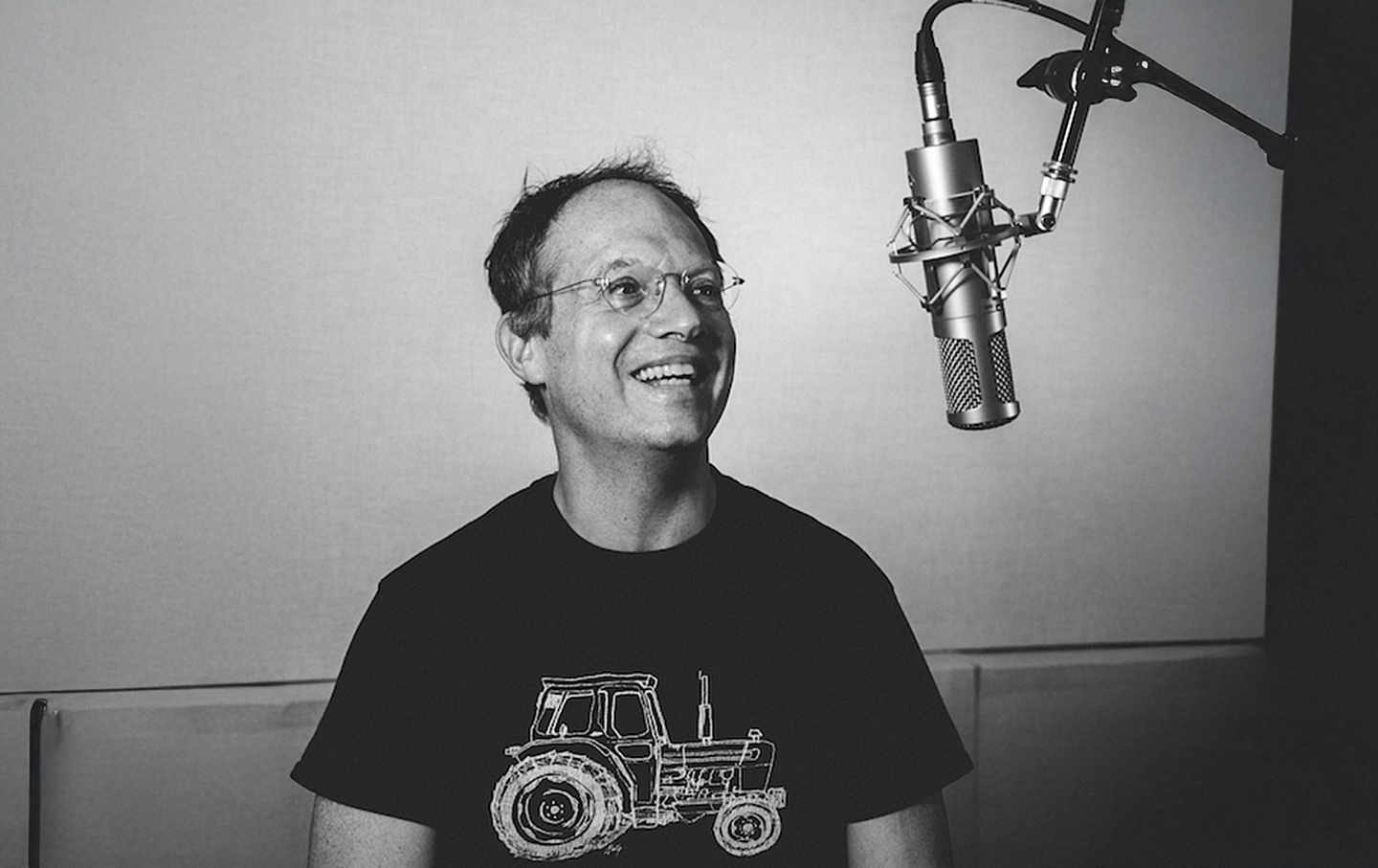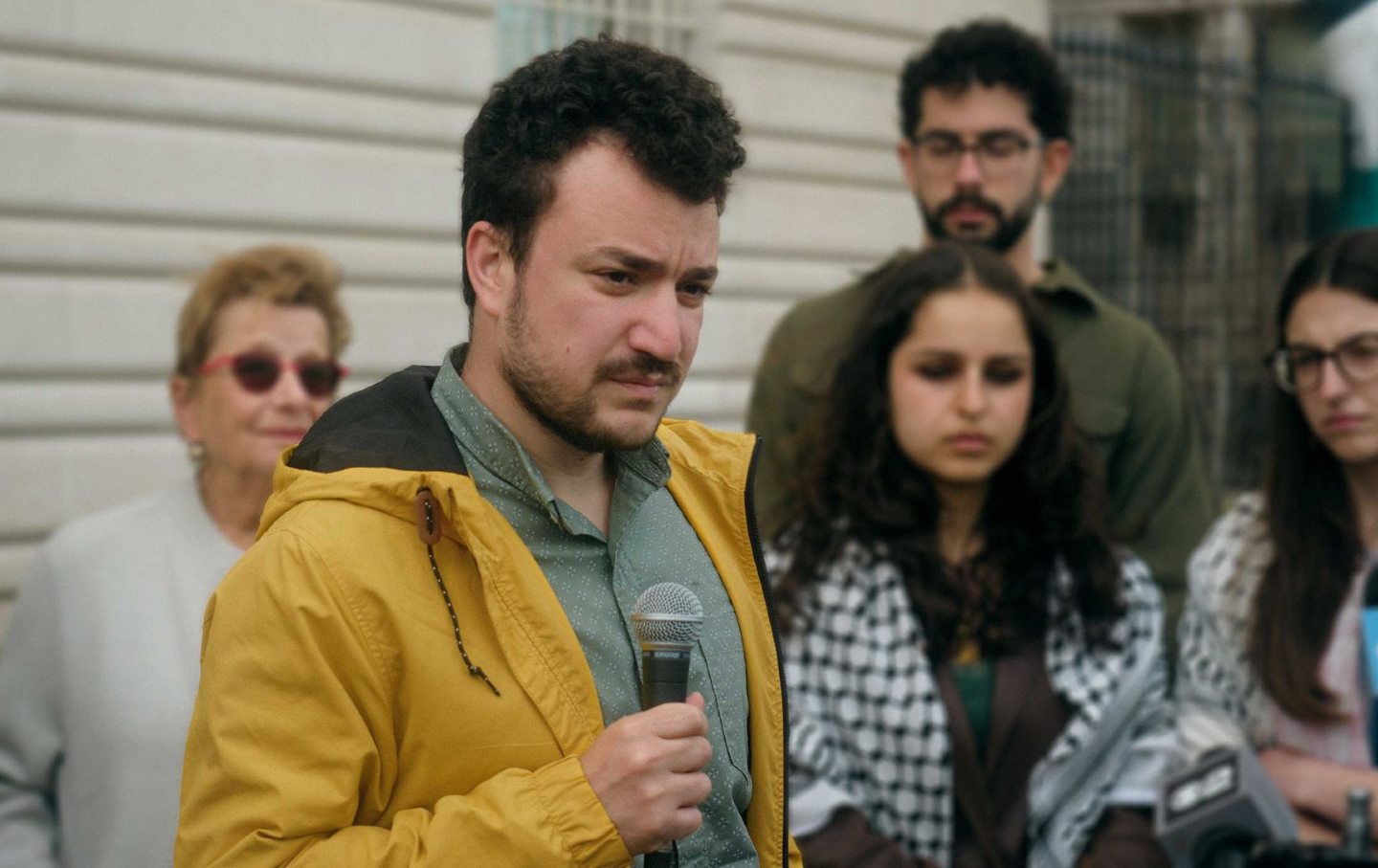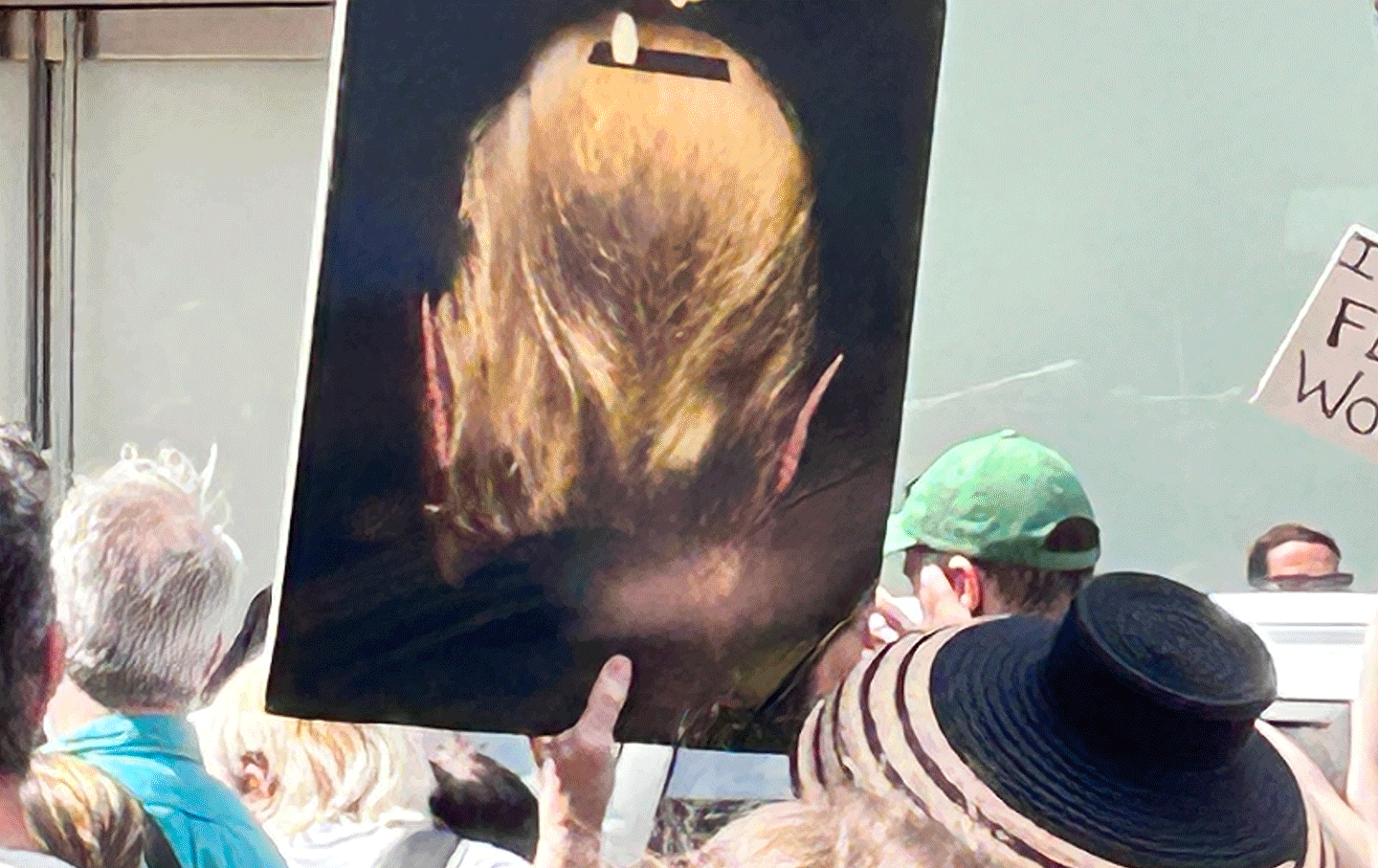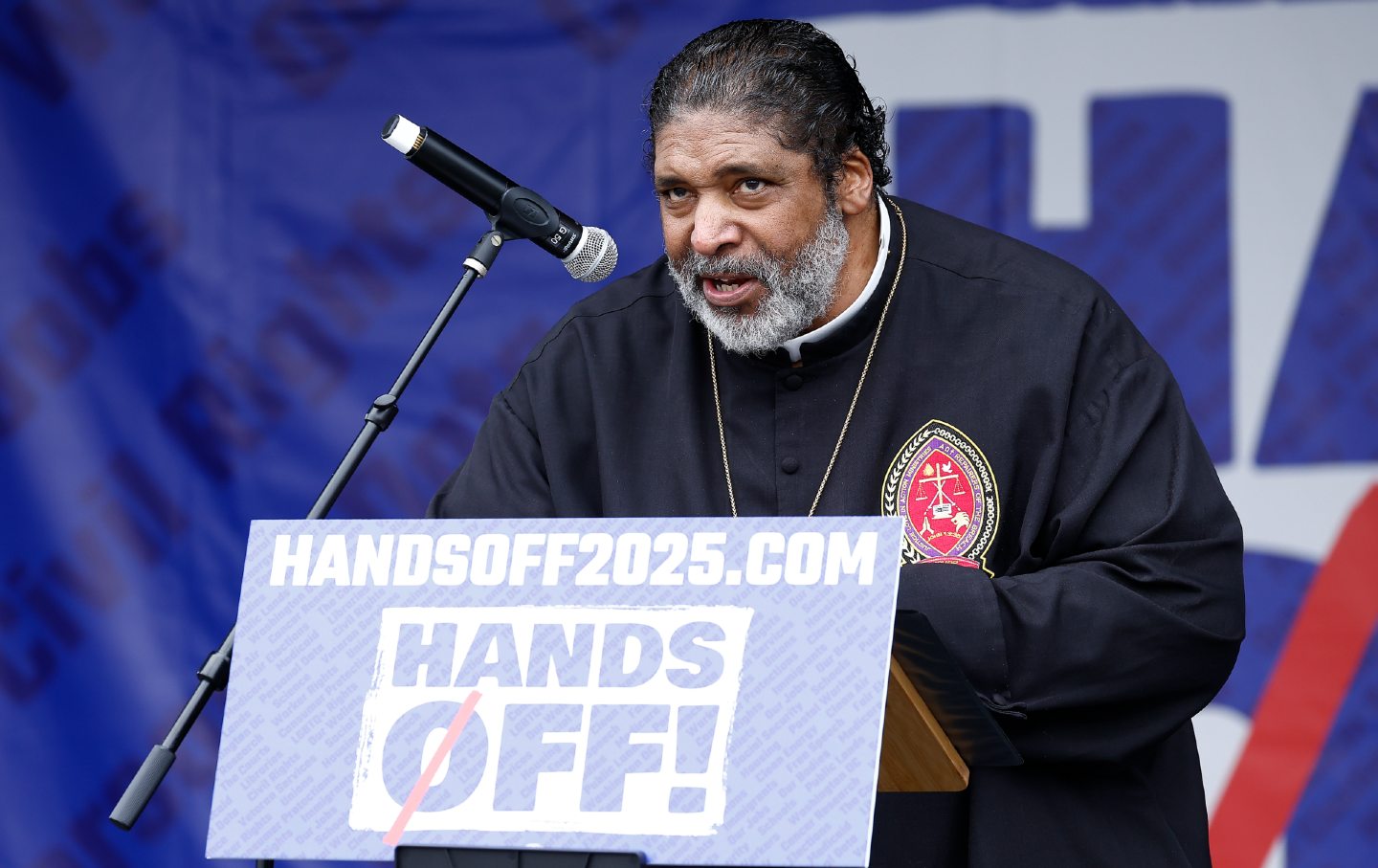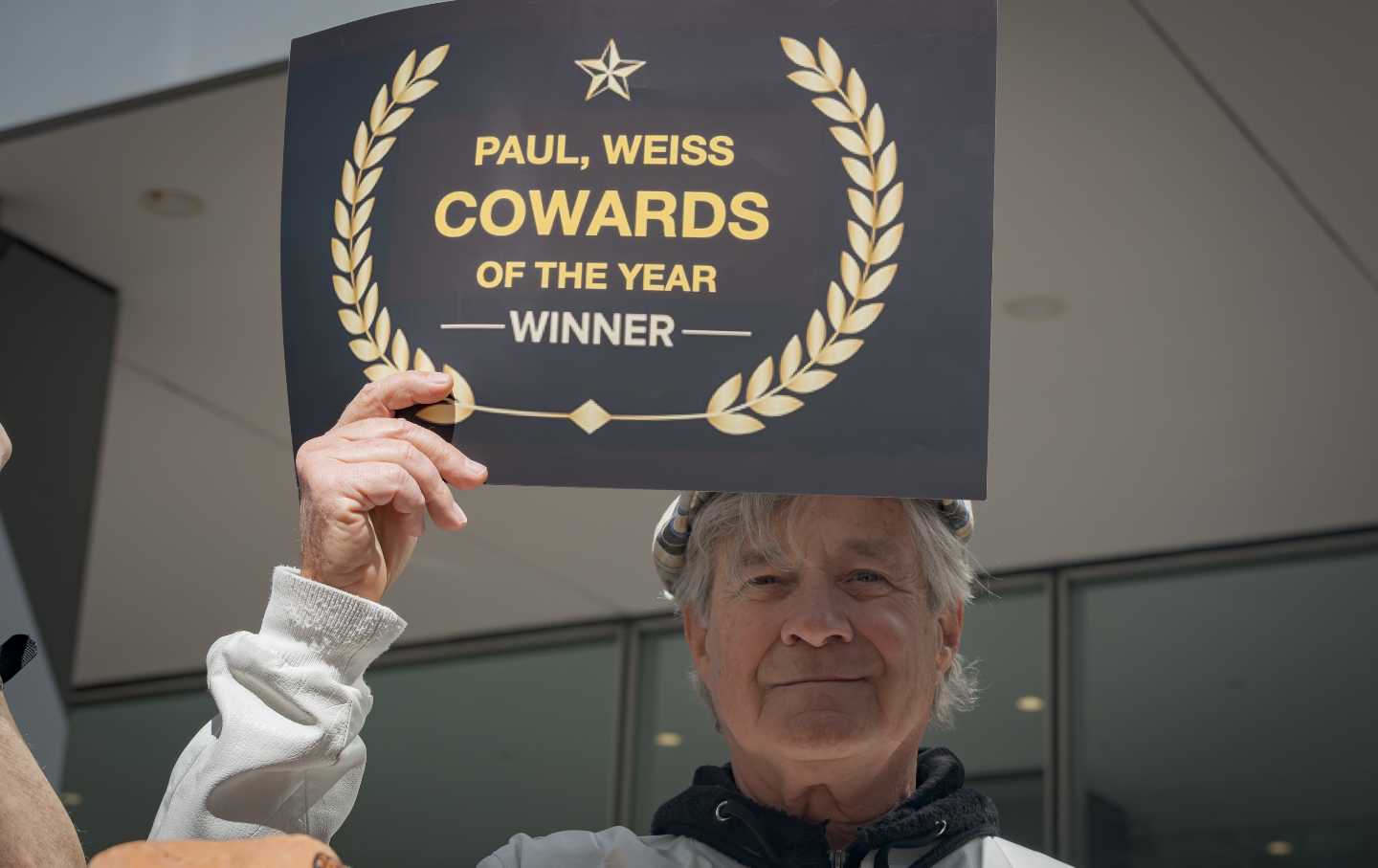India’s Elections Shocked the World. They Shouldn’t Have.
The roots of the revolt against Narendra Modi’s government were visible to anyone who cared to look.
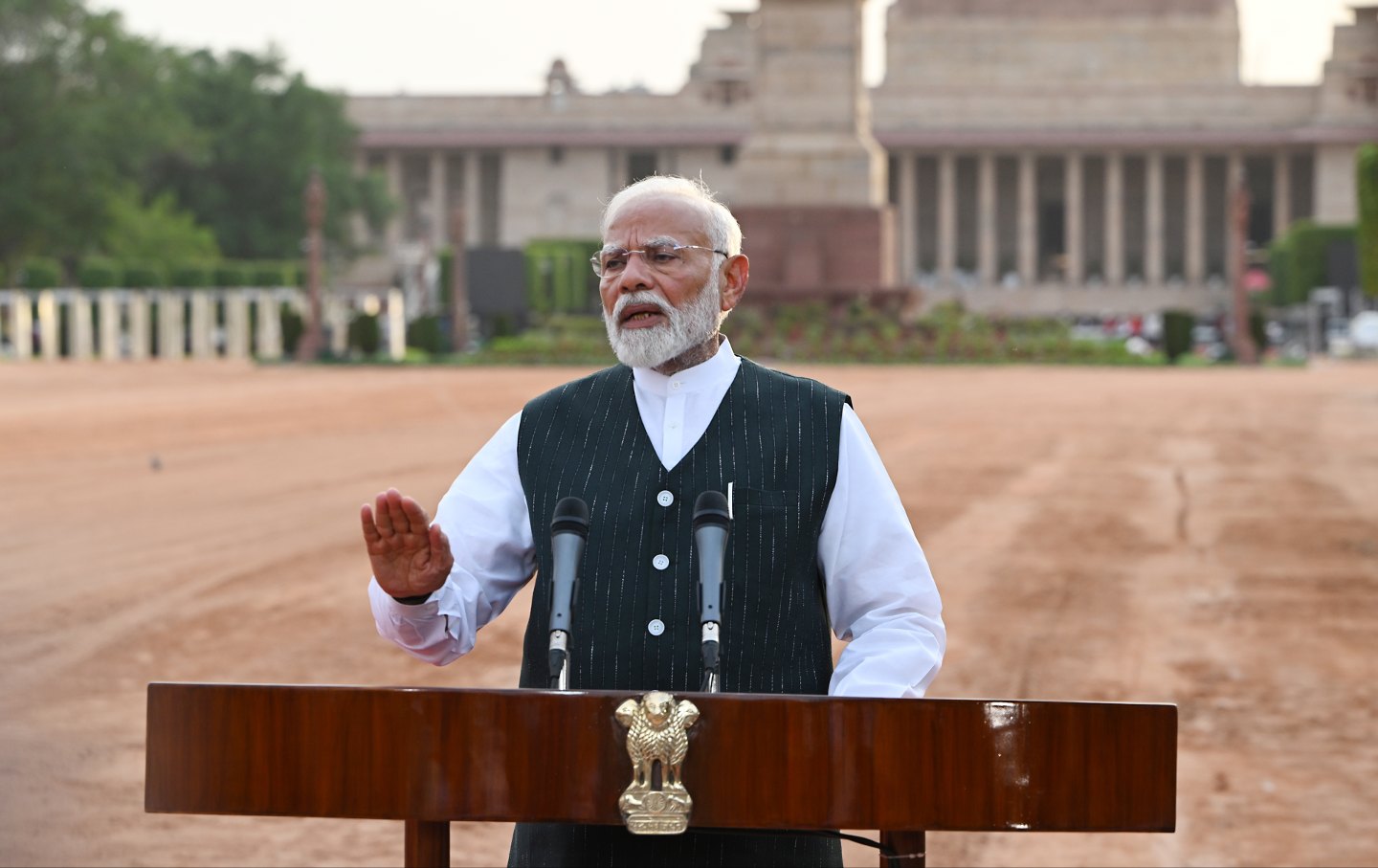
Narendra Modi speaks to members of the media outside the President’s House in New Delhi, India, on Friday, June 7, 2024.
(Prakash Singh / Bloomberg via Getty Images)
“Ab ki baar, chaar so paar!” Over the last six months, millions of Bharatiya Janata (Indian People’s) Party (BJP) supporters reveled in their party’s official slogan for the 2024 Indian parliamentary elections, bellowing it at rallies and meetings across the country. The phrase roughly translates to “This time around, we’ll get over 400 seats!”—a swaggering proclamation that radiated inevitability.
In the run-up to the election, the BJP’s preening seemed at least somewhat justified. The 400+ goal felt audacious, but always felt possible—at times, even certain. The party’s electoral coalition emerged out of the last parliamentary election in 2019 with 352 seats (303 for the BJP alone)—a powerful mandate in the 543-seat chamber that put 400 seats within close reach. Polls pointed to another decisive victory, giving even more ballast to the slogan. And, most of all, at the helm of the BJP sits Narendra Modi, who’s among the most charismatic, magnetic, and indomitable politicians that India has ever seen.
Much has been written about Modi’s decade as prime minister. His Hindu nationalist politics, which has turned hundreds of millions of Indian Muslims into targets of the state, are well-known, as is his evisceration of Indian civil society. It’s clear what a third consecutive landslide win would have facilitated: an era of unipolar, one-party politics, where Modi’s already significant capture of state institutions would deepen to the extent that BJP machinery became fully indistinguishable from everyday bureaucratic governance. It would have been a tripling down on the repression that has become so normalized throughout Indian society: more opposition political leaders and journalists thrown into jail; more state-sanctioned vigilante violence targeting religious, caste, and cultural minorities; more capture of bureaucratic institutions; and more crackdowns on dissenting speech.
This grim scenario began to seem like a reality on June 1, with the official release of exit polls. Numerous polls promised a remarkable showing for the National Democratic Alliance (NDA), the electoral coalition headed by the BJP. Almost all of them had the NDA surpassing the 350-seat mark, and some even had the group edging close to 400. All of India’s mainstream news channels (which have effectively devolved into mouthpieces for the BJP) went into a manic frenzy—casting aside any pretense of objectivity and adopting a tone of open celebration. Slowly, the news of the exit polls reached Western media outlets, who rushed to forecast a thumping reelection victory for the prime minister and his party.
But when official vote counts began trickling in on June 4, it became clear that the exit polls had been wildly incorrect (some have even alleged that exit poll manipulation took place). One pollster broke down sobbing on national television over the scale of his firm’s errors.
As it turned out, the BJP wasn’t going to add 100 seats to its coalition. The party was actually hemorrhaging seats across the country—most shockingly, in constituencies across its strongholds in the north in states such as Uttar Pradesh, Rajasthan, and Haryana. The BJP ultimately lost 63 seats, ending up with 240. For the first time since coming to office in 2014, the party lacked an absolute majority, meaning that it would have to depend on its NDA allies to form a coalition government. Now, the NDA alliance sits at 293 seats. Meanwhile, INDIA, the electoral alliance led by the Congress Party, the left-of-center, secular, national opposition party, exceeded all expectations, netting 246 seats.
The eulogies for Indian democracy delivered in the weeks and months leading to the election now feel premature, even absurd. The Indian democratic project appears more robust and resilient than many people anticipated, and its voters rebuked the illiberal, one-party abyss presented by the BJP. Even though the cult of Modi and the specter of Hindu nationalism remain far from vanquished, they have suffered a significant, historic loss.
Even as Modi’s aura of invincibility remained pristine from afar, some close observers of Indian politics maintained that a landslide reelection victory was far from guaranteed. One point of evidence seemed to be the BJP’s inability to mobilize the grassroots zeal that powered it to victory in the previous two parliamentary elections. While the last two election cycles featured a raucous base of BJP supporters and an energized party machinery, this election season was characterized by a palpable silence, both among voters and Hindu nationalist footsoldiers. But mainstream news outlets, which remained captured by pro-Modi forces, rarely confronted BJP leaders with any serious or rigorous questioning of their party’s organizational difficulties during the campaign.
Historically, the BJP has relied on volunteers from the Rashtriya Swayamsevak Sangh (National Volunteer Organization, RSS) to carry out much of the legwork of campaigning. The RSS is a century-old, pan-Indian paramilitary group, influenced by the ideologies of Nazi Germany and fascist Italy, that boasts millions of members (some call it the largest volunteer organization in the world) to proselytize the Hindu nationalist cause. The RSS has been implicated in fomenting numerous instances of mob violence over the last seven decades (it’s even been banned from India on three occasions), and it anchors an entire network of Hindu nationalist organizations, including women’s groups, youth groups, labor unions, and overseas chapters. The BJP was spawned out of the RSS as its political wing, and Modi himself has been in the RSS since he was a child.
Modi remains beloved by vast swaths of Hindu nationalists, but his swelling stature has created friction between the BJP and the RSS—the former an organization whose leadership has largely been filled by Modi’s inner circle, and the latter a rigidly ideological organization, whose cultural mission of Hindu supremacy takes precedence over any single individual. Power struggles between the Modi circle and RSS leadership have brewed for years, and spilled out into the open this election season. In an interview conducted last month, BJP President J.P. Nadda, a close Modi ally, shocked political observers when he openly stated what had, until then, been acknowledged only by insinuation: “In the beginning we would have been less capable, smaller and needed the RSS. Today, we have grown and we are capable. The BJP runs itself.”
This lack of grassroots support among party workers and loyalists must also be contextualized with a broader resentment held by rural Indians, especially in the north. Unemployment has soared in recent years; the economy has languished while wealth inequality soars; educational opportunities have dwindled; social welfare systems haven’t been able to deliver as promised. After a full decade in office, there is little room for the prime minister to evade responsibility for the national government’s shortcomings. In many constituencies across India, races became localized referendums on the current state of life in India.
Ever the nimble politician, Modi deployed familiar tactics to try to nationalize the election. Most notably, he injected brazenly majoritarian, anti-Muslim rhetoric into his campaigning. Though his anti-Muslim politics are well-known, Modi as prime minister has typically deployed dog whistles rather than open hate speech—but his tenor shifted sharply during this election season. During one speech in Rajasthan, he chillingly described Muslims as “infiltrators” who “have more children” and accused them of disproportionately collecting government benefits. Days later, during another speech, he accused opposition leaders of performing mujra—a Mughal-era dance historically performed by courtesans—to curry favor with Muslim voters. To some, these crass proclamations could be interpreted as indicating overconfidence, a certainty of victory that allowed him to present his politics entirely unmediated. But to others, this change in tone revealed a new sense of desperation.
Though large portions of the Indian public subscribe to Modi’s breed of Hindu nationalism, for millions of Indians these ideological commitments pale in comparison to the anger elicited by the BJP’s failures to govern. These failures rarely received any media attention from mainstream outlets, which all prostrated to the BJP in portraying the prime minister as both invincible and infallible. Only thanks to the nation’s burgeoning independent-media ecosystem did these sorts of stories get any traction. Modi’s attempt to divert attention away from the material deficiencies of everyday life and toward this greater ideological battle fell flat.
Perhaps the best example of this may be seen in the grand Ram Mandir (RamaTemple) in the north Indian city of Ayodhya, which opened in January of this year. The city has become a site of holy pilgrimage over the last few centuries, owing to the myth that the Hindu deity Rama was born there thousands of years ago. The temple was constructed on the ruins of a mosque destroyed by Hindu nationalist paramilitaries (working in tandem with BJP politicians) in 1992, in an event that helped supercharge the Hindu nationalist political movement. When Modi, the head of state of an ostensibly secular nation, presided over the temple’s consecration in January of this year, hundreds of millions of Indians celebrated. The temple was seen as a grand, shining monument to Modi’s Hindu supremacist India—one that not only legitimated but also sanctified majoritarian mob violence.
On the ground, however, the construction of the temple drew the ire of residents in Ayodhya. Many had their homes seized and destroyed by the government, and were either given meager compensation or lackluster dwellings on the outskirts of the city. The slums that surrounded the temple largely remained undeveloped, and for many locals the temple became a symbol not of a triumphant Hindu identity but of a government preoccupied by its own performance of grandeur, at the expense of the poor. Last week, voters in Ayodhya’s parliamentary constituency shocked the nation when they voted out their BJP representative. Constituencies across India did the same.
This, of course, is just a brief snapshot of certain themes that colored this election—a more complete analysis would consider other factors, such as shifting caste allegiances, evolving party politics at the state and regional levels, and the roles of competing regional and cultural chauvinisms. It will take months, if not years, to sift through the data of the 640 million votes cast—and even then, India is too large and heterogenous for easy answers. “There is no single overarching explanation that would apply to this election,” one analyst has asserted. “Any theory that you’re going to come up with won’t be applicable in a neighboring state.”
But coming out of last week, there are certain things that we can definitively say. For one, even as this rightly feels like a victory for Modi’s opponents, his party remains the strongest force in Indian politics. BJP vote shares spiked in southern states, such as Tamil Nadu and Kerala, areas that have historically been resistant to the BJP’s brand of politics but in recent years have received enormous investments from the party—now, they seem poised to break through in those states’ upcoming assembly elections. The BJP also emerged victorious in the eastern state of Odisha, routing the incumbent regional Biju Janata Dal (Biju People’s Party) from Parliament, now holding 20 of the state’s 21 seats. The BJP’s losses in the north (as well as in Maharashtra and West Bengal) shouldn’t necessarily be taken as a rejection of Hindu nationalism. The ideology is alive and well, and will continue its long march throughout the country.
Popular
“swipe left below to view more authors”Swipe →Still, this result is undoubtedly a setback for Modi’s regime, which, for the first time, will have to rely on other parties to stay in power. Modi’s fiat to rule will now have a real check, and his government, with just a 21-seat majority, can’t afford any reckless overreach. One wrong move may cause the departure of coalition allies (most of whom aren’t doctrinal Hindu nationalists), which could humiliatingly topple the NDA government. This dilution of BJP’s mandate should also enable a reinvigoration of Indian civil society, which has languished under a decade of suppression. Activist groups and NGOs have been routinely punished over the last decade for their advocacy, especially when they criticize government policy—this will likely change in a freer political environment. Media outlets, as well, will hopefully feel emboldened to report stories without fear of state reprisal.
Most of all, this electoral performance has punctured Modi’s aura of invincibility. It has given his opponents the confidence to challenge Modi and the BJP head-on. Even as key leaders of the opposing electoral alliance sat in jail on trumped-up charges, and even as Congress Party bank accounts were frozen during the election season, the opposition still managed to put forth a strong performance by drawing attention to the BJP’s failed policies (and tapping into the anti-incumbency sentiments that often attach to governing parties after so many years in power). The opposition coalition, the INDIA Alliance, is a sprawling, unwieldy political configuration, one composed of dozens of parties (many of whom have bitterly fought one another over the years). The INDIA Alliance’s challenge, now, will be to remain united as it proposes an alternative to the hostile, exclusionary consensus championed by the BJP.
A return to the pre-Modi status quo won’t suffice—after all, it’s that status quo that birthed the explosion of strongman Hindu nationalism. Opposition leaders in politics and civil society must go far beyond that and put forth an expansive vision for India that guarantees economic and social justice for all, across caste, class, and religious lines. Indian voters rejected the fatalism that the rest of the world projected onto their nation, and they wrested away their political system from an authoritarian chokehold. Now, the opposition must meet the voters’ mandate.

